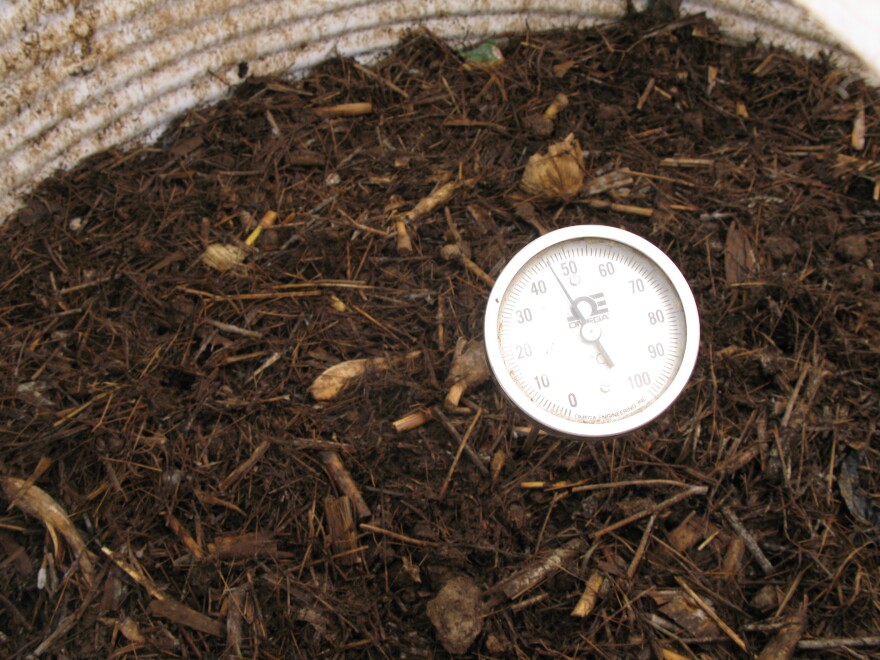As the temperatures begin to chill, more people are thinking about finding their snowblower than digging in the garden. But gardening expert and Lake Effect contributor Melinda Myers says there are still things you can do, like composting.
Composting uses organic materials that mix together and decompose. The resulting compost is great for plants and seeds in the garden.
Different types of composting
If you don't have the time or space to do a lot of composting, sheet composting is a good solution.
"I lived in the city for 26 years on a small city lot and so I was very creative. I would do a lot of sheet composting. What’s that? Annual weeds that had not gone to seed — no seeds or flowers — I'd use as mulch around my shrubs. I'd shred my leaves with my mower and use those on the soil around my perennials," Myers explains.
"Annual weeds that had not gone to seed ... I'd use as mulch around my shrubs. I'd shred my leaves with my mower and use those on the soil around my perennials."
If you have time and space, there are various kinds of compost bins and composting styles that can be considered.
- Open top bins lined with hardware cloth can offer a cheap compost bin.
- Some people prefer dual bins that allow new material to mix in one section while actively composting in the other. These compost bins can also incorporate worms, which can make the composting process faster.

What should (and shouldn't) go into compost
There are a lot of different things that can go into the compost, which can help put food waste to use. Myers says, "kitchen scraps (plant-based), fresh grass clippings (no weed killer applied), worm castings (if you do worm composting), brown materials (fall leaves, corn stalks, things like that)."
There are some organic materials that people should avoid putting into a compost bin, as they can impact the quality of the compost.
"No meat, no dairy, no bones, no fat ... You want to avoid weeds that have gone to seed because most of us don't compost hot enough to kill those weed seeds, so we make our compost and we plant weed seeds right back in. No invasive plants, things like garlic, mustard, purple loosestrife," says Myers.
"No meat, no dairy, no bones, no fat ... No invasive plants, things like garlic, mustard, purple loosestrife."
Creating a compost heap
The raw materials that go into the compost are just one part of the process.
Myers explains, "Mix those [materials] together and have an 8-10 inch layer, a pile. Then we'd sprinkle some finished compost or soil over top, 'cause that has the microorganisms that are going to break down [the compost] ... and then another 8-10 inches of green and brown and then continue this until your pile is 3 feet high, at least, and 3 feet wide."
Importance of heat
The microorganisms inside of the compost pile work tirelessly to decompose these materials. As they do that, they create heat, which is an essential part of creating healthy compost.
"You're going to really cook those materials and get rid of a lot of the problems, so that's a way to really manage a lot of those, insects, disease, and weed seeds," she says.

Maintaining the compost pile
Myers says it's important that the compost isn't in a damp part of the yard, or the moisture could impact the smell and consistency of the pile. Using a compost thermometer, test the inside of the pile, which should peak around 160-165 degrees.
"As those temperatures cool, you move the material in the center to the outside ... and the outside to the center," she advises. "And then you let it heat up again, and it'll heat up and then as it cools off, you turn. You want to keep it about the moisture, the consistency of a damp sponge that's been rung out."
How to know the compost is ready to be used
"If it looks like soil, basically, and crumbly and brown, it's finished. If you use partially decomposed compost in your garden, it will continue composting ... good addition in the fall garden because it'll break down over winter. Otherwise, if you can wait until it's totally decomposed, you'll get the biggest benefit," says Myers.
Compost can be used on lawns, in raised beds, or in potted plants, as desired.








